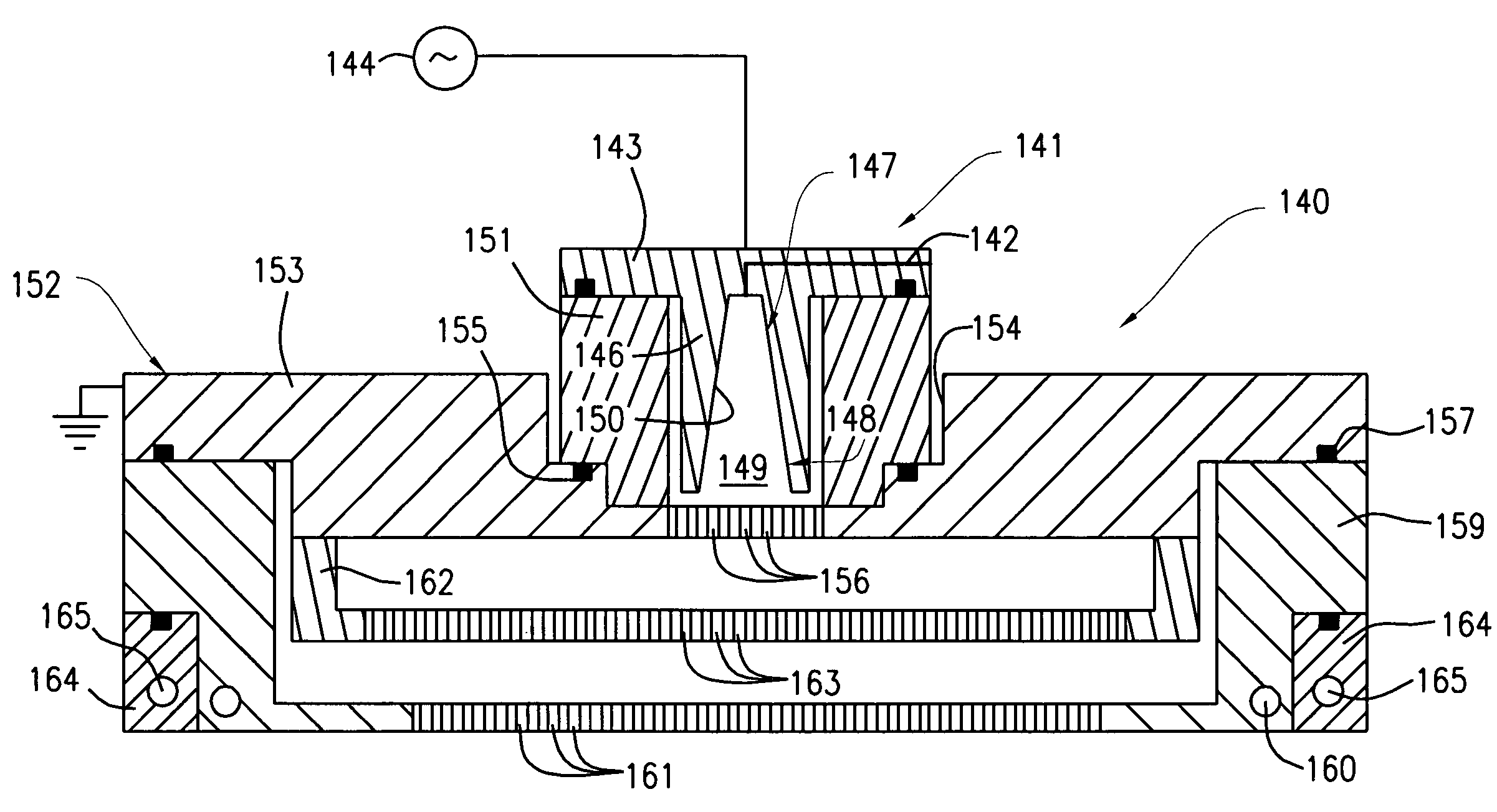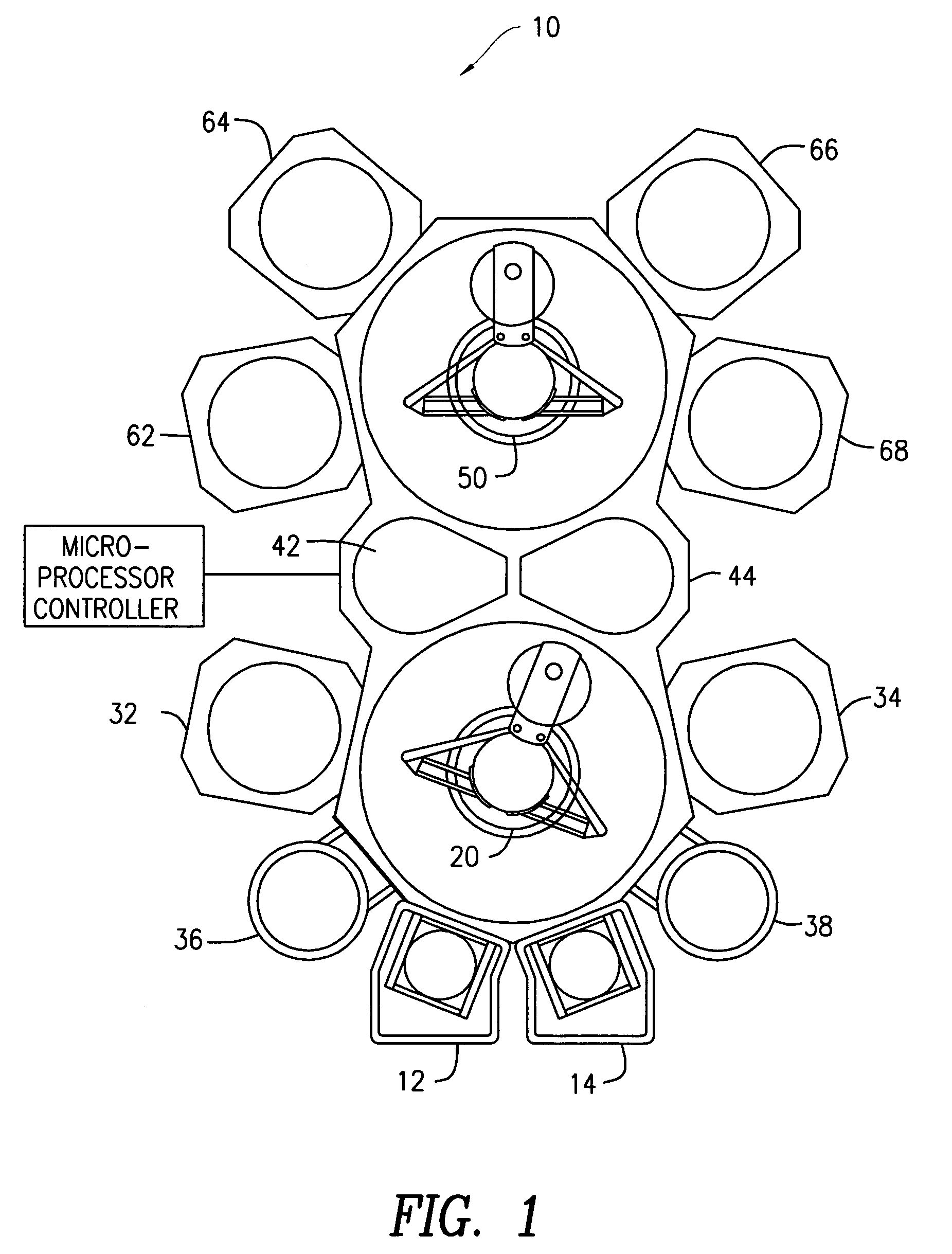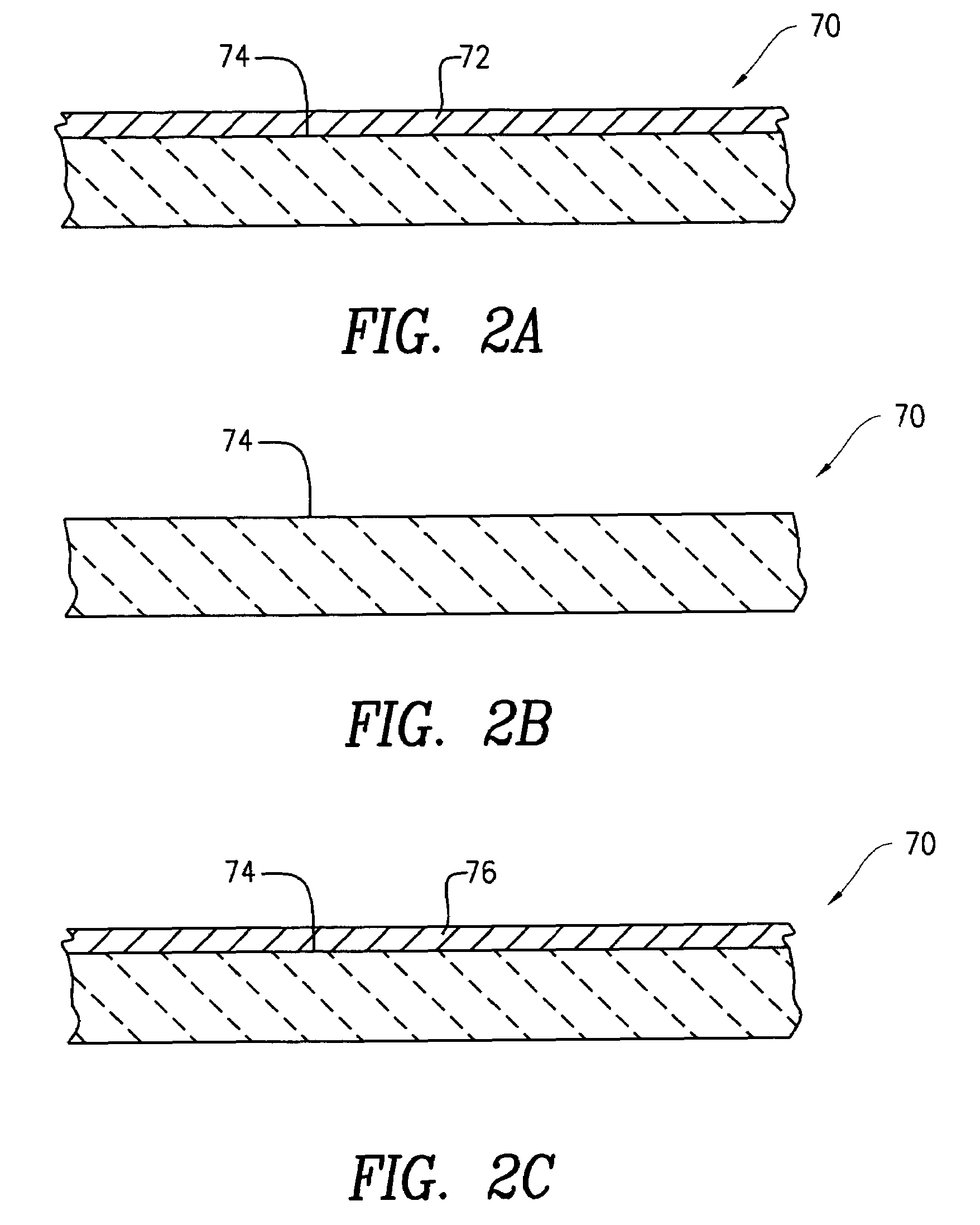Epitaxial deposition process and apparatus
a technology of epitaxial deposition and deposition process, applied in the direction of crystal growth process, polycrystalline material growth, chemically reactive gas, etc., can solve the problems of high temperature process in thermal budgeting, detrimental impact of epitaxial growth process, and error in subsequent atomic ordering
- Summary
- Abstract
- Description
- Claims
- Application Information
AI Technical Summary
Benefits of technology
Problems solved by technology
Method used
Image
Examples
Embodiment Construction
[0014]Before describing several exemplary embodiments of the invention, it is to be understood that the invention is not limited to the details of construction or process steps set forth in the following description. The invention is capable of other embodiments and of being practiced or being carried out in various ways.
[0015]Aspects of the invention relate to systems, apparatus and methods for epitaxial deposition of films onto substrates. As will be appreciated by the skilled artisan, well-known semiconductor processing equipment and techniques relating to epitaxial deposition are not described in detail in the following so as to not unnecessarily obscure the present invention. Persons skilled in the art will readily recognize that process parameter values will vary significantly depending on the particular environment, substrate type, etc. As such, a comprehensive list of possible values and conditions is neither practical nor necessary, as such values can be determined once the...
PUM
| Property | Measurement | Unit |
|---|---|---|
| temperature | aaaaa | aaaaa |
| temperature | aaaaa | aaaaa |
| temperature | aaaaa | aaaaa |
Abstract
Description
Claims
Application Information
 Login to View More
Login to View More - R&D
- Intellectual Property
- Life Sciences
- Materials
- Tech Scout
- Unparalleled Data Quality
- Higher Quality Content
- 60% Fewer Hallucinations
Browse by: Latest US Patents, China's latest patents, Technical Efficacy Thesaurus, Application Domain, Technology Topic, Popular Technical Reports.
© 2025 PatSnap. All rights reserved.Legal|Privacy policy|Modern Slavery Act Transparency Statement|Sitemap|About US| Contact US: help@patsnap.com



